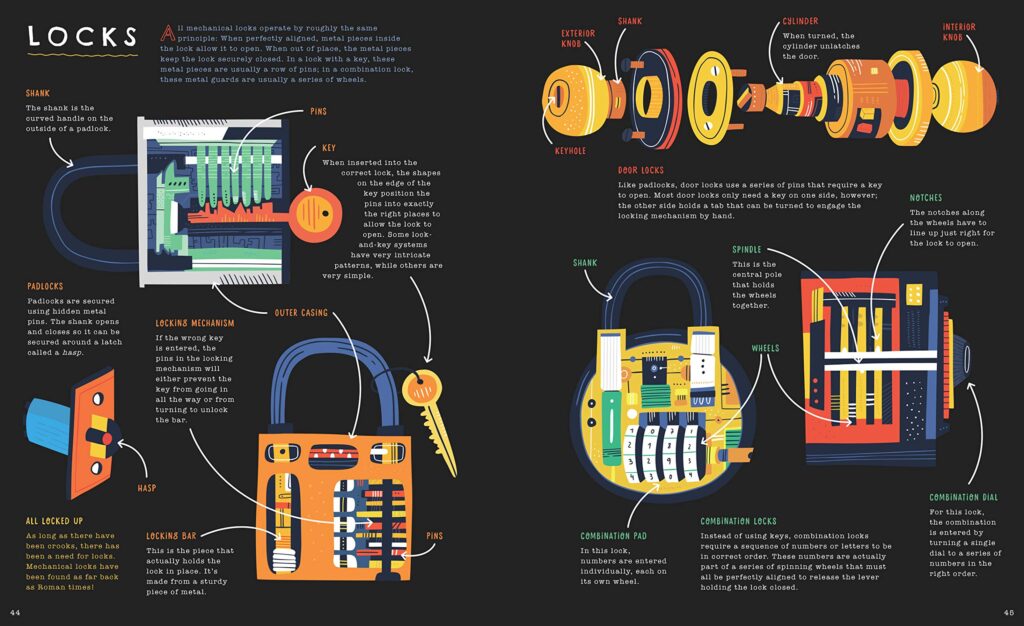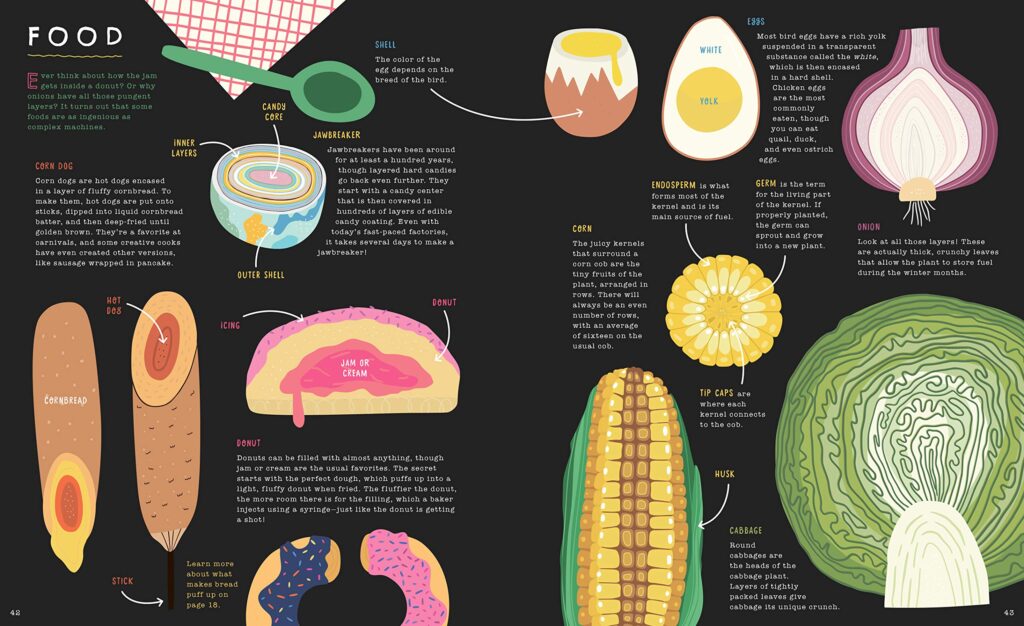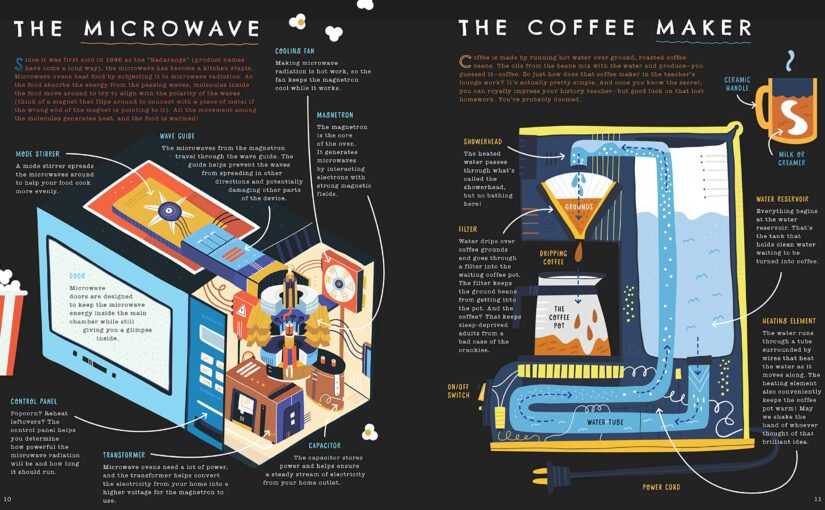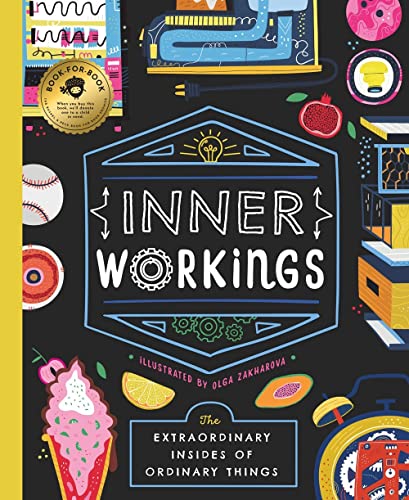I taught a fifth-grade student who drew detailed illustrations of automobiles in his spare time. They were surprisingly intricate, exterior drawings of cars with some having overview representations of their engines. While many kids who are that age like cars, this student’s passion and talent certainly went to the next level. Inner Workings is an engineer’s look at how just over two dozen things that kids see on a daily basis work. The illustrations in the book mainly consist of cross-section pictures that are done in a classic-retro style. It’ll initially draw in those mechanical engineer kids, as well as those who are just curious about how the soft-serve ice cream machine works.

The other big aesthetic that will draw in young readers are the book’s pages. They’re all a glossy, black background that allows the bright colors of the book to really pop. The text is white, while the subjects and headers vary between red, yellow, and purple. A book’s design can be a very subtle thing that will impact whether or not kids actively read it or just thumb through it trying to fool the teacher into thinking that they’re really working.
Inner Workings is a book that’ll be a kid’s curiosity friend for a page or for a couple of pages. Some of the pages feed into or off of other pages like when the carousel’s bright colors lead you to see how paint is contained within a spray can on a different page. How do they get the pencil lead inside of a pencil? Actually, it’s graphite now, but people still refer to it as lead and have a fear of stabbing themselves with it.

Regardless of your age, you’ll find something new in Inner Workings, The Extraordinary Insides of Extraordinary Things, that’ll make you spout interesting tidbits. The slot that you put cash into on a vending machine is called a discriminator and also confirms that the money is not counterfeit. The ice cream cone was created in 1896 but popularized eight years later when a waffle maker helped out an ice cream friend who had ran out of dishes. Fireworks operate with their colors due to the different chemicals that are packed in tandem with its gunpowder. There’s a weight block in the center of bowling balls whose placement and centering determine how it’ll react when it’s rolling down the lane.
For some reason, the typewriter takes up two pages in the book. Kids today would know a keyboard, but a typewriter is as relevant to them as the pony express. All of the other ordinary things in the book are ones that kids will see in their daily travels or have in their houses.
Inner Working’s presentation will lend itself to those engineer-minded kids who ask themselves why or how certain things work. Those kids will go deeper into the book than the casual kids who pick it up as another resource for their essay on great inventions.

You want kids to read it so that their curiosity will be stimulated, but most kids will skip over the book once they give it a cursory look. This could’ve been mitigated by having a very rough narrative device. Things that they might see during a school day, things that they might see on vacation, or some other manner to group things would make readers stay longer. Those scientific kids will willingly engage in the connect-the-dot manner, but most will need to find a map or reason to dig deep within the book.
Inner Workings, The Extraordinary Insides of Ordinary Things is by Peter Hinckley with art by Olga Zakharova and is available on Bushel & Peck Books.
There are affiliate links in this post.






 Facebook
Facebook Twitter
Twitter Flickr
Flickr GooglePlus
GooglePlus Youtube
Youtube